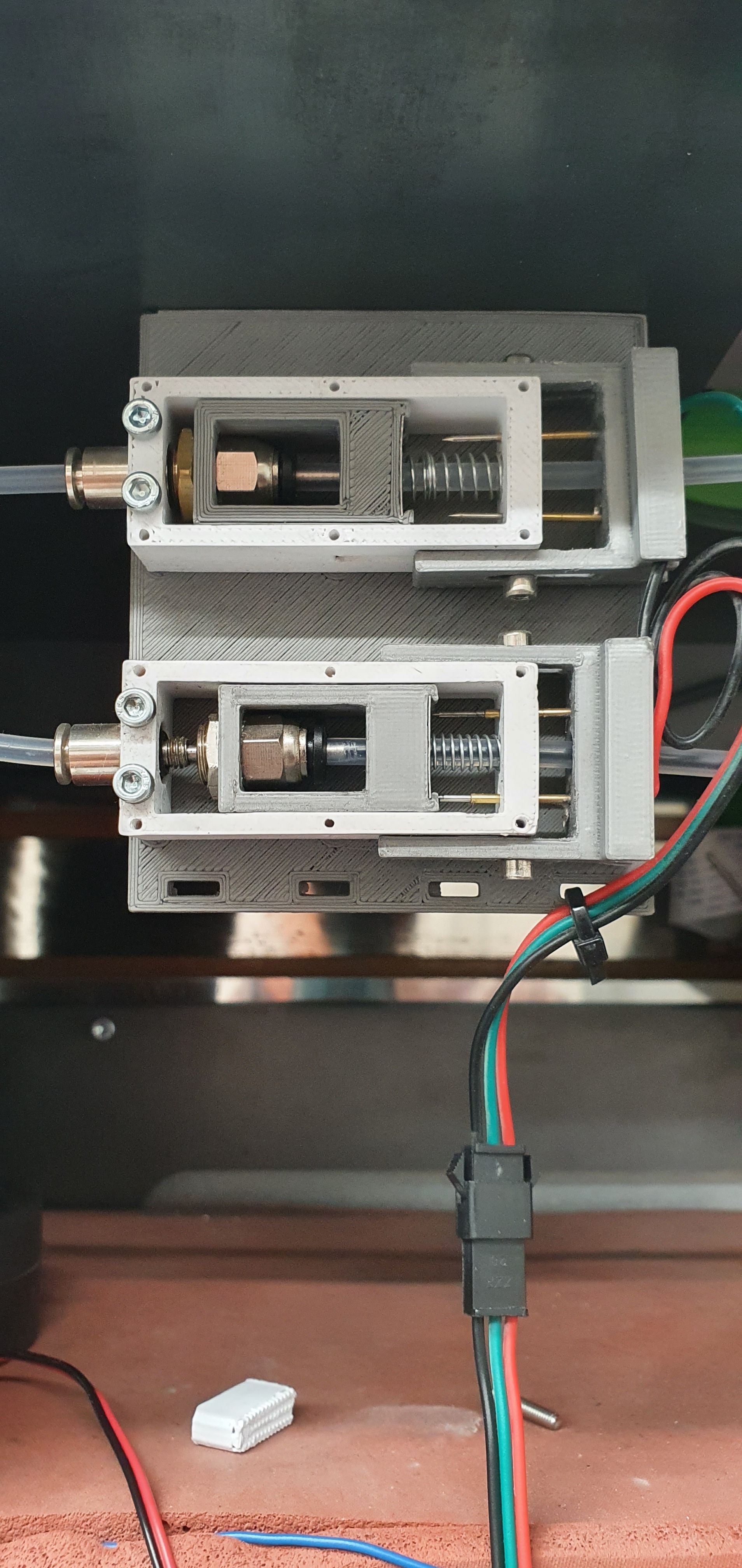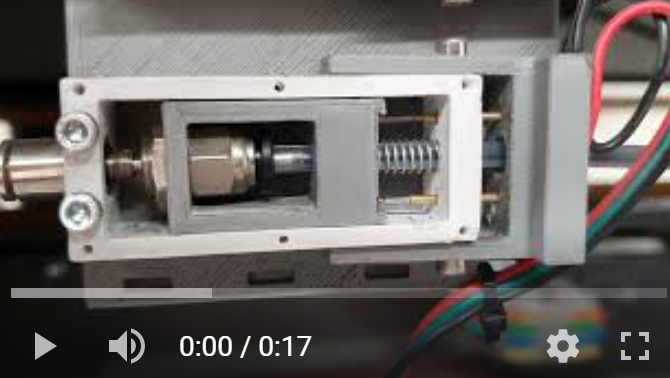Filament pressure sensor
-
Hi all,
I designed a filament pressure sensor some time back for our large printers and it seems to be reliable.
I thought it might be useful and can share more information if people are interested.
I have found that this sensor has replaced the need for a filament rotating monitor (this is good because I have had lots of issues with these) and even the need for a filament out switch (for a basic setup) if you use it with a feeder motor.
(we use orbiters as our feeder) We need a filament feeder because our machine is big, although it would be great on a smaller machine also to take the load off the extruder.It works like this:
We have orbiter feeders in our reel chamber, when you put filament in the feeder it is driven through this sensor up to the print head. Once it hits the print head the shuttle moves back and makes a connection that stops the feeder motor. if the print head starts extruding and taking filament the shuttle drops back and the feeder motor starts again, so it starts and stops over and over supplying the extruder with a slight positive pressure. when the feeder motor is driven we send a division of the stepper pulses to the duet, emulating a rotating filament sensor input (#7 pulse generation sensor). if the nozzle gets gammed then there won't be enough pluses from the feeder dive then the print will pause, if the filament runs out or a PTFE tube breaks then there will be too many pluses and the print will pause also.
I have designed it so you can put more filament in truck-and-trailer style, so the new roll of filament is pushing the old up to the head and it won't get jammed through this sensor setup. -
@nz_andy Does this work because the sensor provides some resistance/drag on the filament as it passes through?
-
@generisi It does not work due to drag or resistance. It works like this: if you try to push filament up a tube without holding onto the tube, the tube will simply move away and you will not be able to push filament up that tube. If you hold onto the tube then filament can be pushed through it, the more force at the other end restricting the filament the more you need to hold onto that tube.
With this sensor the tube is held buy a shuttle that is able to side, as the pressure increases it pushes against that spring you see until makes contact. you can adjust the pressure by moving the contacts in and out.
-
@nz_andy are you planning on releasing the design files?
-
@jay_s_uk Yes I can share the files. I will make a little video of it working and how it goes together first
-
@nz_andy super interesting! Do you also have a strain gauge in the mix to measure the actual pushing force?
-
@oliof Hi, no I don't but it that could work also, or a distance measurement using a hall sensor and the spring rate. Ether way would give interesting opportunities, but I like the idea of the strain gauge.
With force feedback we could set different pressure setting depending on the material, for example TPU, very low. Also if you want big retraction the feeder motor could then reverse to reduce the pressure.Right now it is just set and forget and it works fine for over 1,000 hours.
-
@nz_andy the force sensor wasn't my idea, it's been used by @Adam-V3D for some investigation about hotend behavior, and is also part of the setup Mirage3C in the Hotend Olympics series -- although the latter doesn't actually seem to use the strain gauge data. But sometimes, a simple quantitative sensor like yours is working well enough (-:
-
Here is a short video.
Key principle is:
1: The PTFE tube held by the shuttle wants to move away from the pressure of the fed filament when there is a blockage at the other end (i.e. there is no filament extruding)
2: When there is no blockage at the other end (i.e. filament is being extruded) pressure is released.Use a fine capillary tube (2.5mm OD - 2mm ID) and drill out the end of the PTFE tube so that it slides easily. Using this method Filament will not get jammed when a new roll of filament is fed behind the old (as there is no way for it to get around the outside of the pushed filament)
